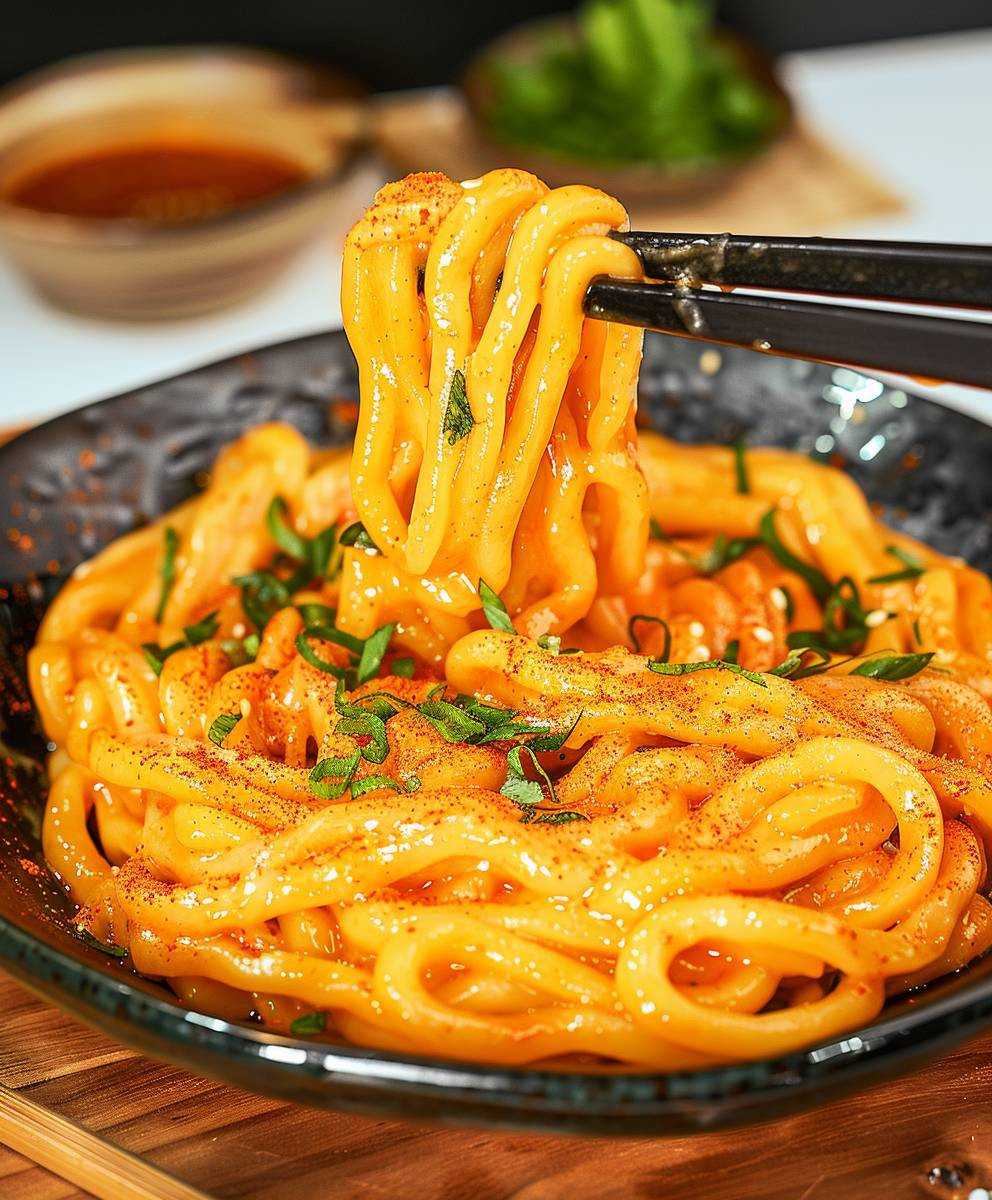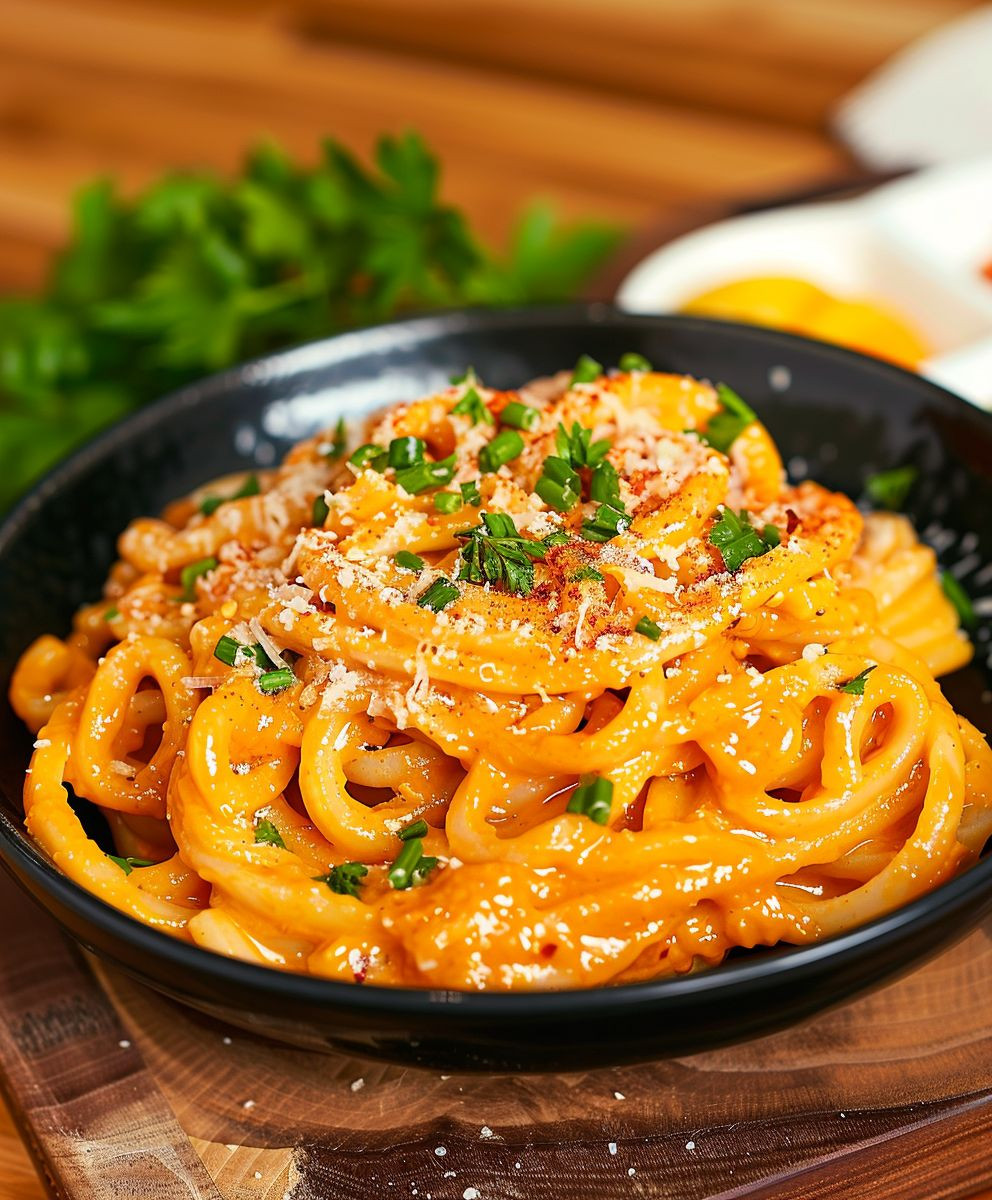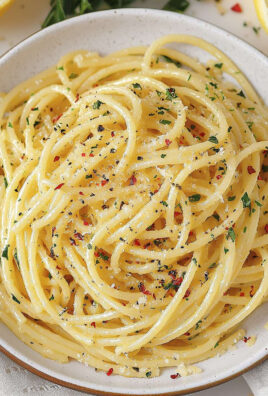Gochujang Udon Noodles: A Flavor Explosion
Gochujang Udon Noodles – just the name conjures up images of vibrant color and intense flavor, doesn’t it? This recipe isn’t just a meal; it’s a culinary journey to the heart of Korean cuisine. I’ve been perfecting this recipe for years, and I’m thrilled to finally share my version with you – a dish that’s both incredibly satisfying and surprisingly easy to make.
Gochujang, the fermented chili paste that stars in this dish, is the cornerstone of many Korean recipes. Its rich, umami depth, balanced by a delightful sweetness and a fiery kick, is what makes Gochujang Udon Noodles so addictive. For centuries, gochujang has been a staple in Korean kitchens, passed down through generations, its unique flavor profile evolving and adapting to regional tastes. The history alone makes this dish special, but it’s the incredible taste that truly seals the deal.
What makes Gochujang Udon Noodles so beloved? It’s the perfect harmony of textures and tastes. The chewy udon noodles provide a satisfying base, perfectly complemented by the savory, slightly sweet, and spicy gochujang sauce. The addition of vegetables adds a welcome crunch and freshness, while the optional protein (tofu, chicken, or shrimp) provides a hearty element. It’s a complete meal in one bowl, perfect for a quick weeknight dinner or a more leisurely weekend lunch. The convenience factor is a huge plus, especially for busy individuals who still crave delicious, authentic flavors.
So, are you ready to embark on this culinary adventure with me? Let’s dive into the recipe and create a bowl of Gochujang Udon Noodles that will leave you wanting more!
Ingredients:
- 8 oz dried udon noodles
- 1 tbsp vegetable oil
- 1 large onion, thinly sliced
- 2 cloves garlic, minced
- 1 inch ginger, peeled and grated
- 1 red bell pepper, thinly sliced
- 1 green bell pepper, thinly sliced
- 1 cup shiitake mushrooms, sliced
- 1 cup broccoli florets
- 1/2 cup carrots, julienned
- 4 tbsp gochujang (Korean chili paste)
- 2 tbsp soy sauce
- 1 tbsp rice vinegar
- 1 tbsp brown sugar
- 1 tbsp sesame oil
- 1 tsp cornstarch
- 1/4 cup water
- 2 green onions, thinly sliced (for garnish)
- Sesame seeds (for garnish, optional)
- Toasted sesame oil (for garnish, optional)
Preparing the Noodles:
- I always start by cooking the udon noodles according to the package directions. Usually, this involves boiling them in salted water until they’re tender but still have a slight chew. Don’t overcook them! Once cooked, drain the noodles and rinse them under cold water to stop the cooking process. Set aside.
- While the noodles are cooking, I like to prepare the sauce. In a small bowl, whisk together the gochujang, soy sauce, rice vinegar, brown sugar, and cornstarch. I add the water gradually, whisking constantly until the mixture is smooth and there are no lumps. This creates a beautiful, glossy sauce that coats the noodles perfectly.
Sautéing the Vegetables:
- Heat the vegetable oil in a large wok or skillet over medium-high heat. I find a wok works best for this recipe because it allows for even cooking and easy tossing of the ingredients.
- Add the sliced onions and cook until they soften and become slightly translucent, about 3-4 minutes. This is a crucial step; the onions provide a wonderful base of flavor.
- Next, add the minced garlic and grated ginger. Cook for another minute, stirring constantly, until fragrant. Be careful not to burn the garlic and ginger, as this can make the dish bitter.
- Now it’s time for the bell peppers! Add the red and green bell peppers to the wok and cook for 2-3 minutes, until they start to soften. I like to keep them slightly crisp for a nice textural contrast.
- Add the shiitake mushrooms and cook for another 2-3 minutes, until they release their moisture and start to brown slightly. Shiitake mushrooms add a wonderful umami flavor to the dish.
- Finally, add the broccoli florets and julienned carrots. Cook for another 3-4 minutes, or until the vegetables are tender-crisp. Don’t overcook them, or they’ll become mushy.
Combining and Finishing the Dish:
- Pour the gochujang sauce over the vegetables and stir well to coat everything evenly. Let the sauce simmer for a minute or two, allowing it to thicken slightly. This step is key to developing the rich, complex flavors of the sauce.
- Add the cooked udon noodles to the wok and toss gently to combine with the vegetables and sauce. Make sure all the noodles are coated in the delicious sauce. I usually do this over medium-low heat to prevent burning.
- Remove the wok from the heat and stir in the sesame oil. This adds a wonderful nutty aroma and flavor to the dish. A little goes a long way!
- Taste and adjust seasoning as needed. You might want to add a little more soy sauce for saltiness, or a touch more brown sugar for sweetness. It’s all about personal preference!
- Serve immediately, garnished with sliced green onions, sesame seeds (if using), and a drizzle of toasted sesame oil (if using). The green onions add a fresh, vibrant touch, while the sesame seeds and oil provide extra nutty flavor and aroma.
Tips and Variations:
- For a spicier dish, add a pinch of red pepper flakes or gochugaru (Korean chili flakes) to the sauce.
- Feel free to add other vegetables you enjoy, such as zucchini, spinach, or bean sprouts.
- If you don’t have shiitake mushrooms, you can substitute with cremini or button mushrooms.
- For a vegetarian/vegan version, make sure your soy sauce is vegetarian/vegan friendly.
- Leftovers can be stored in an airtight container in the refrigerator for up to 3 days. The flavors actually deepen overnight, making it even more delicious the next day!
- To make this a complete meal, you can add some cooked protein, such as chicken, tofu, or shrimp, to the dish.
- If you prefer a thinner sauce, add a little more water to the sauce mixture before cooking.
- Don’t be afraid to experiment with different types of vegetables and proteins to create your own unique version of this delicious dish!
Conclusion:
So there you have it – my recipe for Gochujang Udon Noodles! I truly believe this dish deserves a spot in your weekly meal rotation, and not just because it’s incredibly flavorful and satisfying. It’s also incredibly versatile. The beauty of this Gochujang Udon Noodles recipe lies in its adaptability. You can easily tailor it to your preferences and what you have on hand.
What makes this recipe a must-try? For starters, the rich, savory, and slightly sweet Gochujang sauce is simply addictive. It coats the perfectly cooked udon noodles, creating a symphony of textures and tastes. The addition of vegetables adds a vibrant freshness that balances the intensity of the Gochujang, while the protein of your choice (I love using shrimp or tofu!) provides a hearty and fulfilling element. The entire dish comes together in under 30 minutes, making it perfect for a quick weeknight dinner, yet impressive enough to serve to guests.
Serving Suggestions to Elevate Your Experience:
To make your Gochujang Udon Noodles even more special, consider these serving suggestions:
- Garnish with fresh herbs: A sprinkle of chopped cilantro, green onions, or even some basil adds a beautiful pop of color and freshness.
- Add a fried egg: A perfectly cooked sunny-side-up or over-easy egg adds richness and creaminess to the dish. The runny yolk mixes beautifully with the sauce.
- Top with sesame seeds: Toasted sesame seeds add a nutty aroma and a pleasant crunch.
- Serve with kimchi: The spicy and fermented flavors of kimchi complement the Gochujang beautifully, adding another layer of complexity.
- Add some spice: If you like things extra spicy, add a pinch of gochugaru (Korean chili flakes) or a dash of your favorite hot sauce.
- Make it a complete meal: Serve alongside a simple side salad or some steamed edamame for a balanced and satisfying meal.
Variations to Explore:
Feeling adventurous? Try these variations on the classic Gochujang Udon Noodles:
- Vegetarian/Vegan Option: Simply omit the protein or substitute with your favorite plant-based protein like tofu, mushrooms, or chickpeas.
- Spicy Kick: Increase the amount of Gochujang paste or add a pinch of gochugaru for an extra fiery flavor.
- Creamy Twist: Stir in a spoonful of coconut milk or cream cheese for a richer, creamier sauce.
- Different Noodles: Experiment with other types of noodles like ramen or even spaghetti for a unique twist.
- Add different vegetables: Feel free to add any vegetables you enjoy, such as bell peppers, broccoli, or zucchini.
I genuinely hope you give this Gochujang Udon Noodles recipe a try. It’s a dish that I’ve perfected over time, and I’m so excited to share it with you. Let me know in the comments how it turns out! Share your photos on social media using #GochujangUdonNoodles – I’d love to see your creations. Happy cooking!
Don’t forget to rate the recipe and leave a comment below sharing your experience!
Gochujang Udon Noodles: A Spicy & Savory Noodle Recipe
Spicy udon noodles tossed in a savory gochujang sauce with colorful vegetables.
Ingredients
Instructions
Recipe Notes
- For spicier noodles, add red pepper flakes or gochugaru to the sauce.
- Feel free to add other vegetables (zucchini, spinach, bean sprouts).
- Substitute shiitake mushrooms with cremini or button mushrooms.
- Use vegetarian/vegan soy sauce for a vegetarian/vegan version.
- Leftovers can be stored in the refrigerator for up to 3 days. Flavors deepen overnight.
- Add cooked protein (chicken, tofu, shrimp) for a heartier meal.
- Add more water to the sauce for a thinner consistency. Experiment with vegetables and proteins!







Leave a Comment